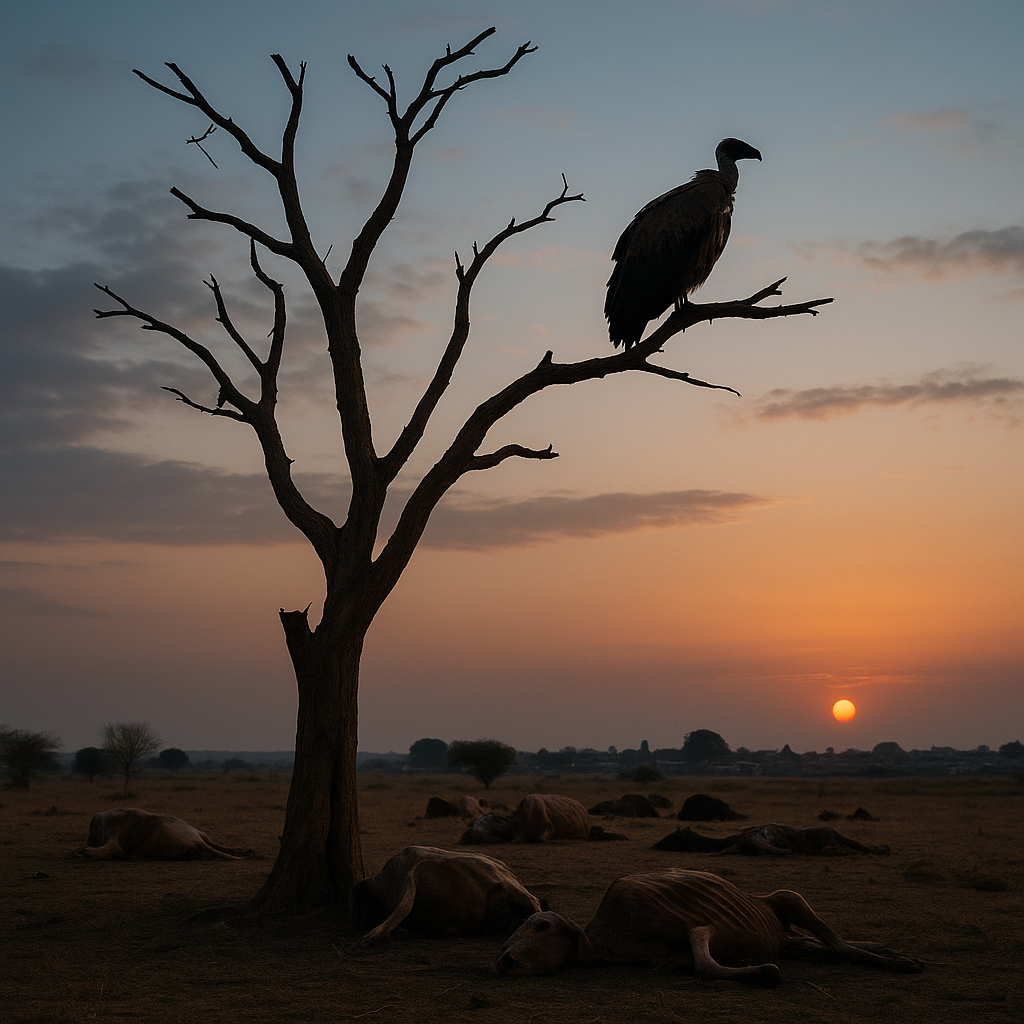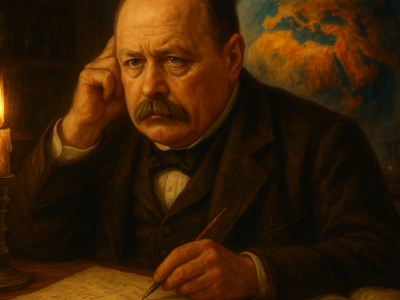In the early 1990s, the skies above rural India were regularly darkened by flocks of vultures circling high above carcasses scattered across fields. These majestic scavengers were once nature’s highly efficient cleanup crew, playing a vital role in maintaining ecological balance. Fast forward a decade, and these skies were eerily empty. A population decline so sharp it triggered global alarm. The culprit was unexpected—a commonly used veterinary painkiller called diclofenac.
Diclofenac, an inexpensive and effective non-steroidal anti-inflammatory drug (NSAID), became widely popular for treating inflammation and pain in cattle across India. Unbeknown to farmers and veterinarians, the drug retained its toxic potency long after the livestock’s death. Vultures feeding on the carcasses of treated animals suffered rapid kidney failure and died within days. The magnitude of this ecological catastrophe was revealed by groundbreaking research led by Dr Vibhu Prakash from the Bombay Natural History Society (BNHS) and documented extensively in the prestigious journal Nature.
A silent massacre in the skies
When Prakash and his team at BNHS began investigating the sudden disappearance of vultures, the results were startling. Between 1992 and 2007, populations of white-rumped vultures (Gyps bengalensis), Indian vultures (Gyps indicus), and slender-billed vultures (Gyps tenuirostris) plummeted by an alarming 97–99%. Entire colonies were wiped out, pushing these once-abundant birds perilously close to extinction.
Prakash’s seminal study, published in Nature in 2004, clearly identified diclofenac as the principal agent causing acute renal failure in vultures. The discovery highlighted a sinister side to veterinary medicine, one with catastrophic environmental consequences. Researchers soon recognised that diclofenac residue, lingering in livestock carcasses, had inadvertently created a death trap for vultures.
The ecological domino effect
The dramatic decline of vultures had unforeseen consequences, triggering a cascade of ecological disturbances. Vultures, by consuming carcasses rapidly, prevented the spread of diseases such as anthrax and rabies. With vultures disappearing, carcasses were left rotting, becoming breeding grounds for harmful pathogens.
This ecological void was quickly filled by a rapidly growing population of feral dogs, rats, and crows. These animals, unlike vultures, are inefficient scavengers and often vectors for human diseases. Public health concerns rose significantly, with increasing cases of rabies reported across India and neighbouring South Asian countries. The Indian government estimated a surge in rabies cases, costing the country millions in healthcare and vaccination efforts annually.
Science in action: Uncovering the crisis
Prakash’s research at BNHS, supported by colleagues at the Royal Society for the Protection of Birds (RSPB) and various universities worldwide, meticulously unravelled the mystery behind the vultures’ decline. Their pioneering forensic approach involved testing carcasses for pharmaceutical residues, coupled with controlled feeding experiments that conclusively linked diclofenac ingestion to kidney failure in vultures.
The study, published across journals including Science and Journal of Applied Ecology, was revolutionary. It highlighted how chemicals introduced into the environment without thorough ecological assessments could have devastating impacts, even when initially considered safe for targeted use.
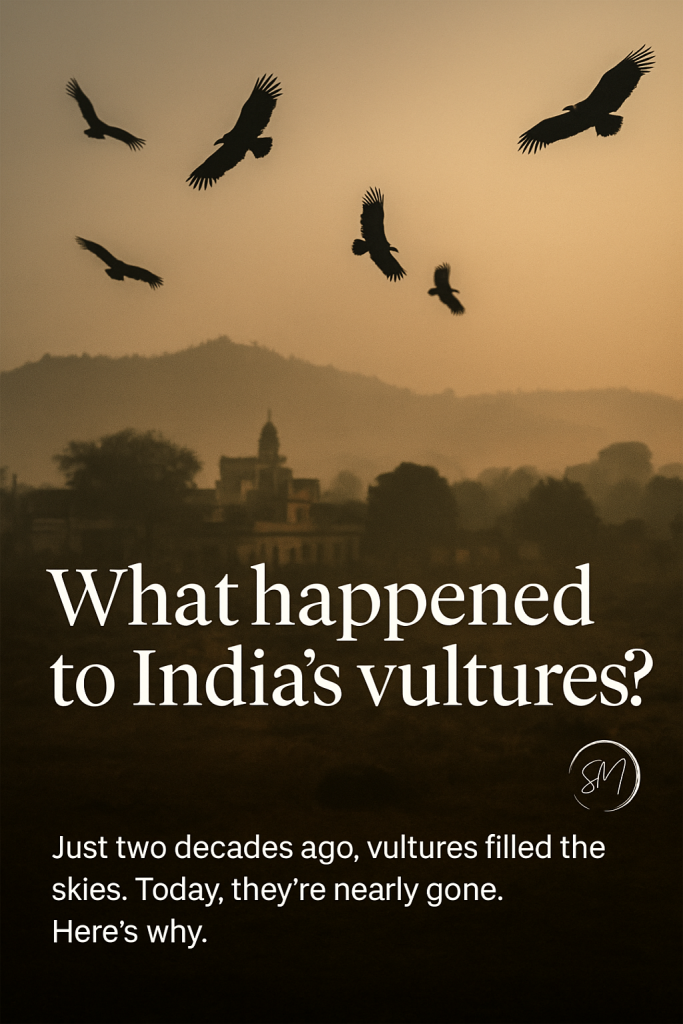
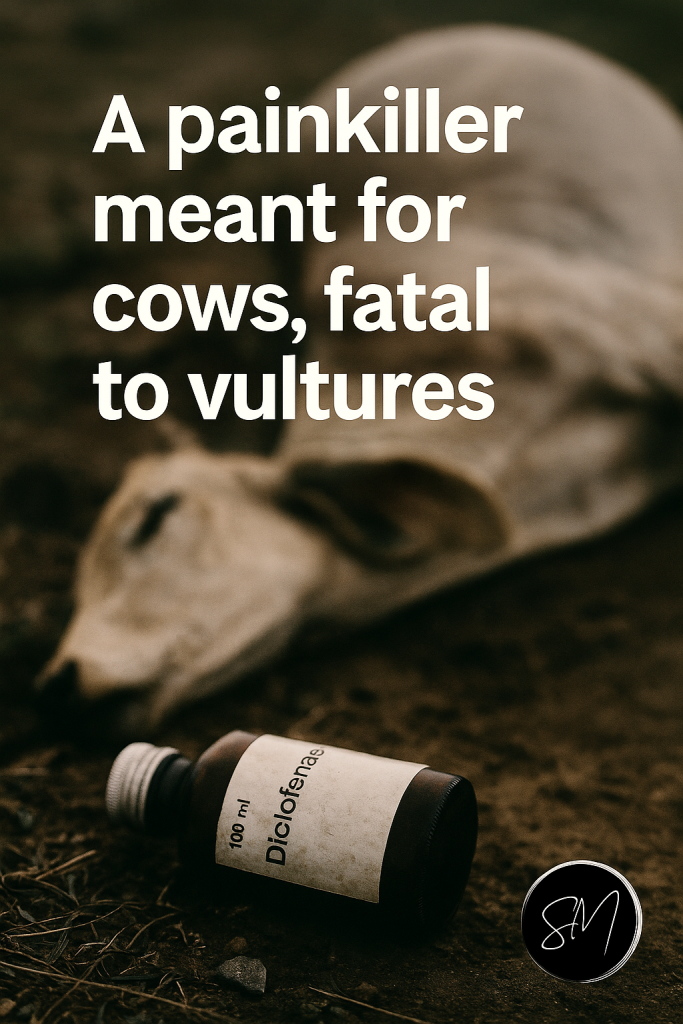
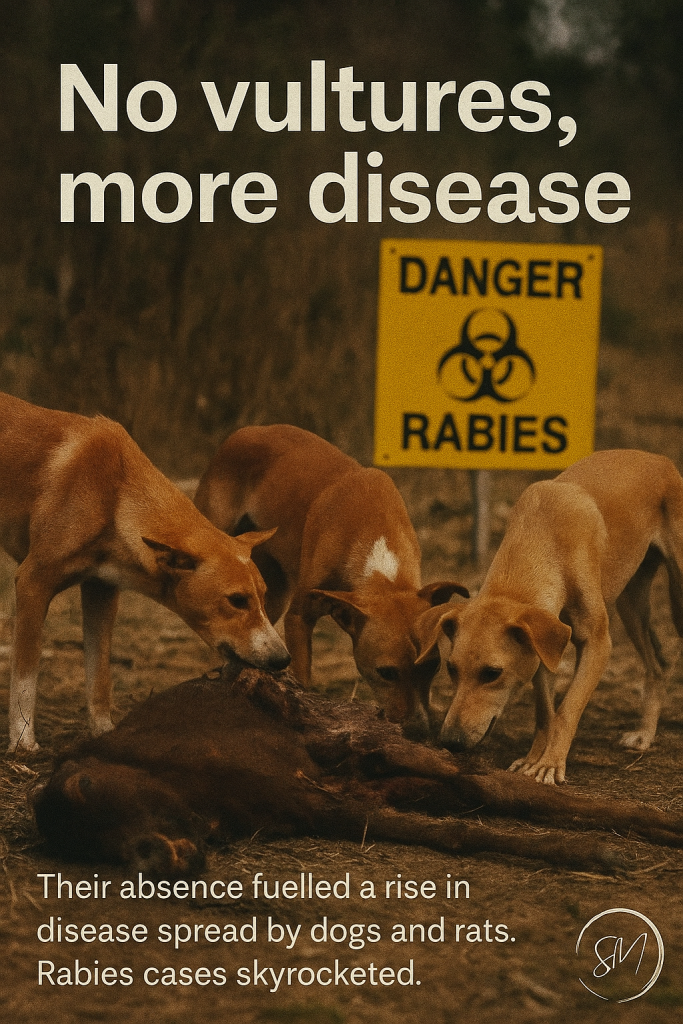
Policy and protection: Banning diclofenac
The scientific revelations quickly translated into urgent calls for action. Conservation organisations, including the RSPB, WWF, and BNHS, campaigned vigorously for policy changes. In 2006, the Indian government responded by banning the veterinary use of diclofenac. This decision was followed by similar bans in Nepal, Pakistan, and Bangladesh.
In place of diclofenac, researchers recommended the safer alternative, meloxicam, another NSAID proven non-toxic to vultures. Studies led by researchers at the University of Cambridge demonstrated meloxicam’s safety, supporting its widespread adoption. Despite the policy victory, conservationists remain cautious. Diclofenac is still illegally available in some rural areas, posing ongoing risks.
Global implications and current challenges
India’s vulture crisis became a global wake-up call, underscoring the risks pharmaceuticals can pose to wildlife. Similar cases emerged in Africa and Europe, sparking international debates on veterinary drug regulations. Recent research continues to highlight pharmaceutical pollution’s risks, emphasising the importance of robust environmental safety assessments.
Efforts to rehabilitate vulture populations in India continue. Captive breeding centres, spearheaded by BNHS, have successfully released vultures back into the wild, demonstrating promising recovery signs. However, challenges remain. Habitat loss, ongoing availability of harmful drugs, and slower-than-expected recovery rates have highlighted the complexity of ecological restoration.
Current events and the broader environmental narrative
Today, the diclofenac crisis is a crucial case study for understanding pharmaceutical impacts on biodiversity. As climate change intensifies and biodiversity loss accelerates globally, lessons from India’s vultures offer insights critical for future conservation and policy-making.
In 2023, new studies from institutions like the University of Delhi continue exploring the broader environmental impacts of pharmaceutical residues in water sources. This research indicates that veterinary and human medicines continue to infiltrate ecosystems worldwide, impacting species beyond vultures, including amphibians, fish, and mammals.
A lesson not to forget
The diclofenac tragedy underlines the necessity for vigilance in drug regulation and environmental monitoring. It also prompts deeper reflection about humanity’s role and responsibility towards wildlife conservation.
Readers are encouraged to participate actively by supporting conservation organisations and staying informed about wildlife-friendly policies. Sharing such stories widely raises public awareness, helping to prevent similar ecological tragedies in the future. Can we afford another silent ecological disaster before taking action?
References
- Oaks, J. L., Gilbert, M., Virani, M. Z., Watson, R. T., Meteyer, C. U., Rideout, B. A., Shivaprasad, H. L., Ahmed, S., Chaudhry, M. J. I., Arshad, M., Mahmood, S., Ali, A., & Khan, A. A. (2004). Diclofenac residues as the cause of vulture population decline in Pakistan. Nature, 427(6975), 630–633. https://doi.org/10.1038/nature02317
- Green, R. E., Newton, I. A. N., Shultz, S., Cunningham, A. A., Gilbert, M., Pain, D. J., & Prakash, V. (2004). Diclofenac poisoning as a cause of vulture population declines across the Indian subcontinent. Journal of Applied Ecology, 41(5), 793–800. https://doi.org/10.1111/j.0021-8901.2004.00954.x
- Swan, G., Naidoo, V., Cuthbert, R., Green, R. E., Pain, D. J., Swarup, D., Prakash, V., Taggart, M., Bekker, L., Das, D., Diekmann, J., Diekmann, M., Killian, E., Meharg, A. A., Patra, R. C., Saini, M., & Wolter, K. (2006). Removing the threat of diclofenac to critically endangered Asian vultures. PLoS Biology, 4(3), e66. https://doi.org/10.1371/journal.pbio.0040066
- Cuthbert, R., Taggart, M. A., Prakash, V., Saini, M., Swarup, D., Upreti, S., Mateo, R., & Green, R. E. (2011). Effectiveness of action in India to reduce exposure of Gyps vultures to the toxic veterinary drug diclofenac. PLoS ONE, 6(5), e19069. https://doi.org/10.1371/journal.pone.0019069

